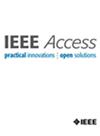Iterative Assessment of Edge Criticality: Efficiency Enhancement or Hidden Insufficiency Detection
IF 3.4
3区 计算机科学
Q2 COMPUTER SCIENCE, INFORMATION SYSTEMS
引用次数: 0
Abstract
The assessment of edge criticality ranking in complex networks is a challenging issue in network science and has numerous applications, including network decomposition and, conversely, enhancing the resilience and redundancy of complex systems. Two main approaches are commonly used to rank edges based on their importance for maintaining network connectivity. The first is the Static approach, which relies on a single evaluation of topological features. The second is the Optimization-based approach, which treats network decomposition as an integral process and optimizes the edge sequence for network decomposition using genetic-like algorithms. While the Static approach is computationally efficient, the Optimization-based approach potentially yields the best decomposition pattern. In the present work, we propose the Iterative approach, which bridges the gap between these two methods. The Iterative approach involves a loop of identifying the most critical edge using selected ranking algorithms, removing it from the network, and then re-assessing edge criticality based on the modified network topology. As a result, the ranking of edge criticality depends not only on the initial topology of the network but also on its continuous modifications caused by edge removal. To evaluate the efficiency of the Iterative approach, we analyze the decomposition of sixteen well-known real-world benchmark networks using seven widely recognized edge ranking algorithms. The results demonstrate, first, that the Iterative approach can achieve a tenfold increase in the efficiency of network decomposition. Second, the analysis reveals hidden inner insufficiency in edge ranking for some algorithms, as evidenced by the fact that algorithm iterations can reduce decomposition efficiency. Additionally, we discuss the time complexity of the Iterative approach and strategies for its reduction. We also outline a potential framework for combining the Static and Iterative approaches during the network decomposition process to further enhance its efficiency.求助全文
约1分钟内获得全文
求助全文
来源期刊

IEEE Access
COMPUTER SCIENCE, INFORMATION SYSTEMSENGIN-ENGINEERING, ELECTRICAL & ELECTRONIC
CiteScore
9.80
自引率
7.70%
发文量
6673
审稿时长
6 weeks
期刊介绍:
IEEE Access® is a multidisciplinary, open access (OA), applications-oriented, all-electronic archival journal that continuously presents the results of original research or development across all of IEEE''s fields of interest.
IEEE Access will publish articles that are of high interest to readers, original, technically correct, and clearly presented. Supported by author publication charges (APC), its hallmarks are a rapid peer review and publication process with open access to all readers. Unlike IEEE''s traditional Transactions or Journals, reviews are "binary", in that reviewers will either Accept or Reject an article in the form it is submitted in order to achieve rapid turnaround. Especially encouraged are submissions on:
Multidisciplinary topics, or applications-oriented articles and negative results that do not fit within the scope of IEEE''s traditional journals.
Practical articles discussing new experiments or measurement techniques, interesting solutions to engineering.
Development of new or improved fabrication or manufacturing techniques.
Reviews or survey articles of new or evolving fields oriented to assist others in understanding the new area.
 求助内容:
求助内容: 应助结果提醒方式:
应助结果提醒方式:


